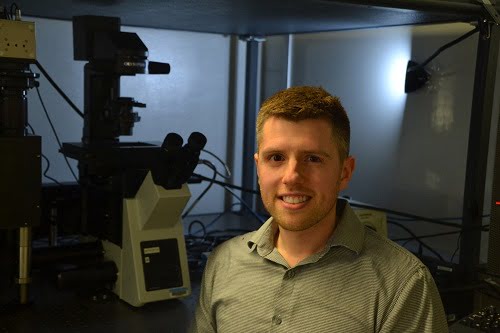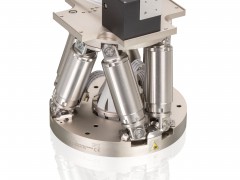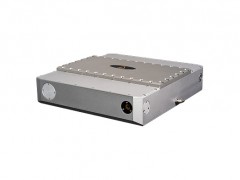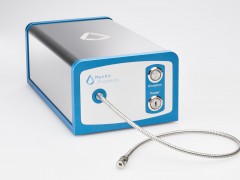
Nanosensors Used to Detect Obesity-Related Diseases
source:photonics
release:Nick
keywords: nanosensors; infrared light; disease monitoring
Time:2017-10-09
KINGSTON, R.I., October 6, 2017 — According to a New England Journal of Medicine study, more than one third of the world’s population is overweight or obese. And, these weight issues can often lead to other health concerns. Researchers from the University of Rhode Island, Memorial Sloan Kettering Cancer Center and the Weill Cornell Graduate School of Medical Sciences have created an optical reporter via nanosensor, which is capable of detecting the progression of obesity-related diseases.
The nanosensors are specially formulated aqueously dispersed single-walled photoluminescent carbon nanotubes, made entirely of one specific semiconducting species.
According to the researchers, the nanosensor responds to lipid and fat accumulation — inside the lysosomal lumen of live cells — through modulation of the nanotube’s optical band gap. This type of fat accumulation can be indicative of diseases including heart disease, Alzheimer’s and certain types of cancers.

Molecules of fat (yellow) binding to the nanosensor. Courtesy of Daniel Roxbury.
University of Rhode Island researcher Daniel Roxbury told Photonics Media that once inside the lysosomes of the cells, molecules of fat can bind to the surface of the carbon nanotubes, altering the wavelength of the light that is emitted.
“The near-infrared light that is emitted by the carbon nanotubes plays a vital role in the ability to detect the accumulation of fat inside of the living cells. The wavelength of the emitted light is unique, as compared to conventional fluorescent dyes,” said Roxbury. “We can use the intrinsic response of the emitted light, in terms of a blue-shifting response, to confirm an abnormal accumulation of fat.”
And this confirmation can help doctors diagnose the disease, enabling them to catch and treat it early on.
The researchers found that their nanosensors function well in live cells.

Daniel Roxbury, assistant professor of chemical engineering at the University of Rhode Island. Courtesy of Daniel Roxbury.
“This enables us to monitor the progression of a disease as well as its reversal when we add an appropriate drug,” said Roxbury. “I believe that carbon nanotubes present a unique opportunity for use in biomedical applications and that their full potential has yet to be uncovered.”
In the future, the researchers hope to move this technology to in vivo applications in animal studies and potentially identify new drug candidates to cure obesity-related diseases.
The nanosensors are specially formulated aqueously dispersed single-walled photoluminescent carbon nanotubes, made entirely of one specific semiconducting species.
According to the researchers, the nanosensor responds to lipid and fat accumulation — inside the lysosomal lumen of live cells — through modulation of the nanotube’s optical band gap. This type of fat accumulation can be indicative of diseases including heart disease, Alzheimer’s and certain types of cancers.

Molecules of fat (yellow) binding to the nanosensor. Courtesy of Daniel Roxbury.
University of Rhode Island researcher Daniel Roxbury told Photonics Media that once inside the lysosomes of the cells, molecules of fat can bind to the surface of the carbon nanotubes, altering the wavelength of the light that is emitted.
“The near-infrared light that is emitted by the carbon nanotubes plays a vital role in the ability to detect the accumulation of fat inside of the living cells. The wavelength of the emitted light is unique, as compared to conventional fluorescent dyes,” said Roxbury. “We can use the intrinsic response of the emitted light, in terms of a blue-shifting response, to confirm an abnormal accumulation of fat.”
And this confirmation can help doctors diagnose the disease, enabling them to catch and treat it early on.
The researchers found that their nanosensors function well in live cells.

Daniel Roxbury, assistant professor of chemical engineering at the University of Rhode Island. Courtesy of Daniel Roxbury.
“This enables us to monitor the progression of a disease as well as its reversal when we add an appropriate drug,” said Roxbury. “I believe that carbon nanotubes present a unique opportunity for use in biomedical applications and that their full potential has yet to be uncovered.”
In the future, the researchers hope to move this technology to in vivo applications in animal studies and potentially identify new drug candidates to cure obesity-related diseases.
MOST READ
- RoboSense is to Produce the First Chinese Multi-beam LiDAR
- China is to Accelerate the Development of Laser Hardening Application
- Han’s Laser Buys Canadian Fiber Specialist CorActive
- SPI Lasers continues it expansion in China, appointing a dedicated Sales Director
- Laser Coating Removal Robot for Aircraft
PRODUCTS
 FISBA exhibits Customized Solutions for Minimally Invasive Medical Endoscopic Devices at COMPAMED in
FISBA exhibits Customized Solutions for Minimally Invasive Medical Endoscopic Devices at COMPAMED in New Active Alignment System for the Coupling of Photonic Structures to Fiber Arrays
New Active Alignment System for the Coupling of Photonic Structures to Fiber Arrays A new industrial compression module by Amplitude
A new industrial compression module by Amplitude Menhir Photonics Introduces the MENHIR-1550 The Industry's First Turnkey Femtosecond Laser of
Menhir Photonics Introduces the MENHIR-1550 The Industry's First Turnkey Femtosecond Laser of Shenzhen DNE Laser introduced new generation D-FAST cutting machine (12000 W)
more>>
Shenzhen DNE Laser introduced new generation D-FAST cutting machine (12000 W)
more>>
